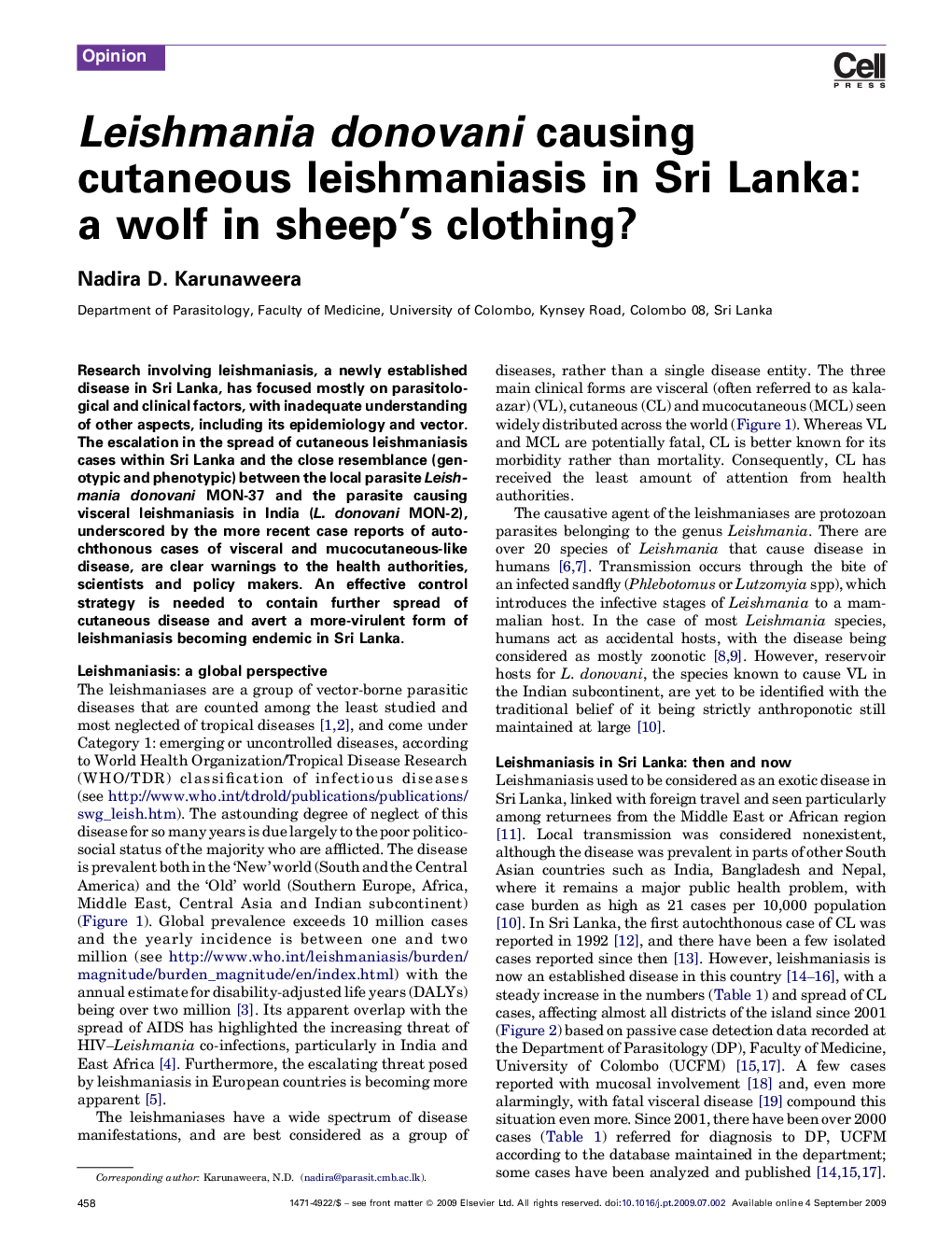| Article ID | Journal | Published Year | Pages | File Type |
|---|---|---|---|---|
| 3423675 | Trends in Parasitology | 2009 | 6 Pages |
Research involving leishmaniasis, a newly established disease in Sri Lanka, has focused mostly on parasitological and clinical factors, with inadequate understanding of other aspects, including its epidemiology and vector. The escalation in the spread of cutaneous leishmaniasis cases within Sri Lanka and the close resemblance (genotypic and phenotypic) between the local parasite Leishmania donovani MON-37 and the parasite causing visceral leishmaniasis in India (L. donovani MON-2), underscored by the more recent case reports of autochthonous cases of visceral and mucocutaneous-like disease, are clear warnings to the health authorities, scientists and policy makers. An effective control strategy is needed to contain further spread of cutaneous disease and avert a more-virulent form of leishmaniasis becoming endemic in Sri Lanka.
